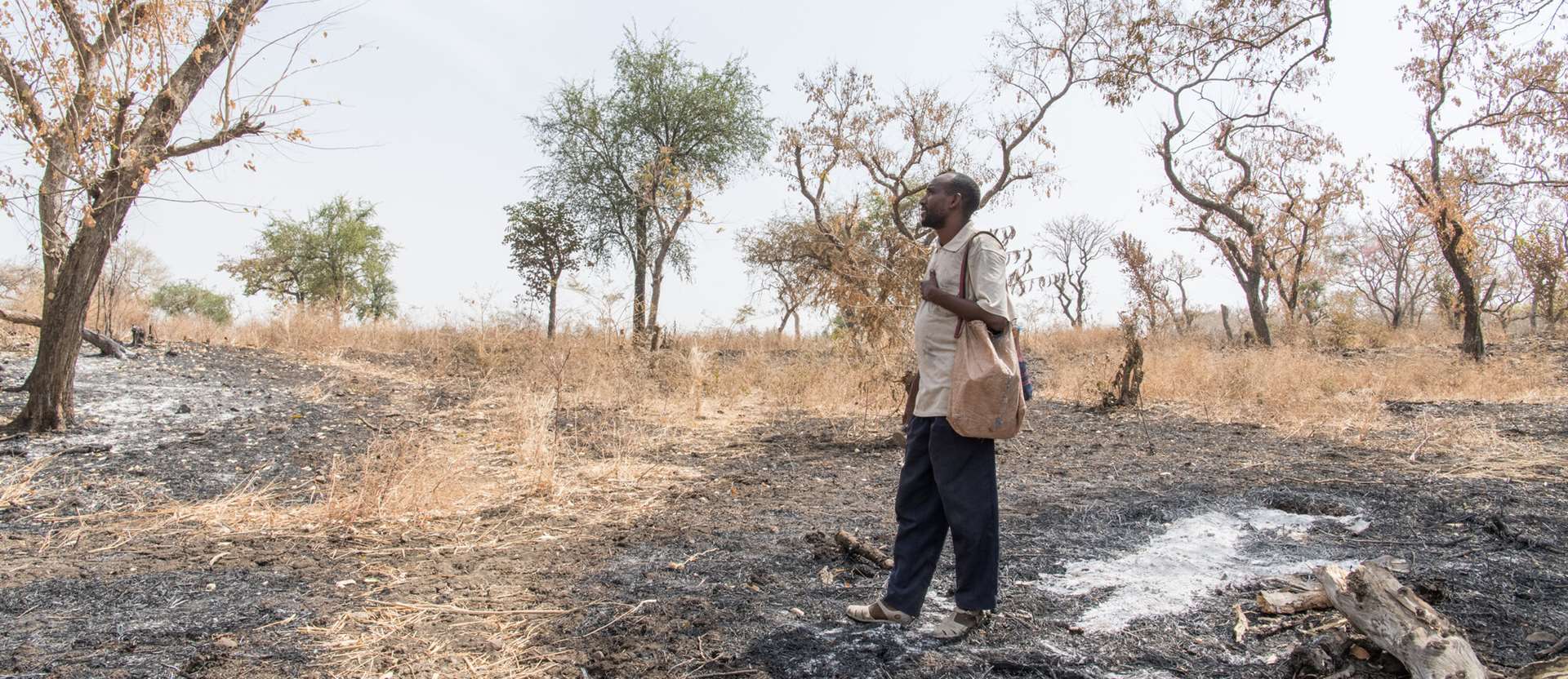
Protecting forests from wildfires
15th August 2022This summer, we have seen the land scorched dry, from Australia to California, Spain to Greece.
Most often, wildfires start when particularly dry forest, grassland or shrubs are ignited by human activity, such as discarded cigarettes or campfires.
Whilst controlled fires can exist as part of a normal and healthy cycle in nature, today's wildfires are growing into more frequent, more intense and more damaging naturally disasters, which can have devastating impacts on people and planet.
As we face up to the 'new normal' of 40C heat in the UK, we must grapple with the reality that wildfires will continue to make front-page headlines in the summertime, across the world.
In this article, we meet the climate heroes working to protect forests in Africa's drylands from wildfires.
Tree Aid’s Forest Governance and Natural Resource Management specialist, Alexis Sompougdou, introduces the forest guards protecting trees in their communities:
Community-led fire prevention
Tree Aid projects are about so much more than simply planting trees. We also work to tackle the root causes of deforestation and forest loss at every level, from practical training to wider advocacy work with local and national governments. This forms part of our Natural Resource Management and Forest Governance approach.
Education and community engagement is key to preventing wildfires, particularly in water-stressed or drought-stricken regions, where you cannot rely on a steady water supply to extinguish fires.
Our projects work with community leaders to develop forest management plans, providing training to forest guards and education to local communities to reduce incidents of fires being started.
Fun Fact: Some of our projects have even involved commissioning awareness-raising jingles for local radio stations? What would your forest fire prevention jingle sound like?
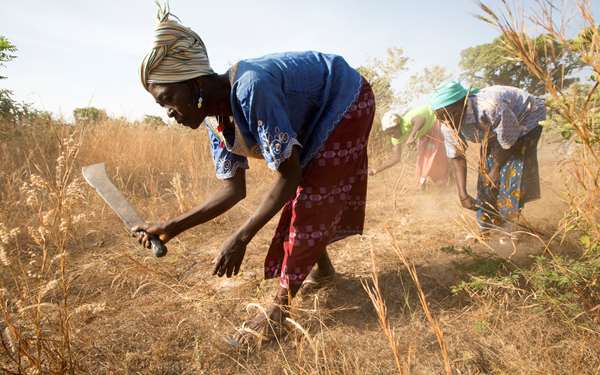

Stopping the spread - firebreaks:
Tree Aid projects train community ‘forest guards’ on bushfire management principles - these guards play a vital role in enacting and enforcing the forest management policies.
One really effective preventative measure for stopping wildfires is the creation of ‘firebreaks’. Bushfires can spread rapidly in Africa’s drylands; by clearing strips of ground between different areas of the forest, you can help to slow and prevent the spread of forest fires, as well as improving access to the forest to fight fires too.
Meet the forest guards – Mouni:
Mouni was trained as a volunteer forest guard as part of our Forest Governance program in Burkina Faso. In his role, he’s responsible for making firebreaks and raising awareness of environmental issues in his local community.
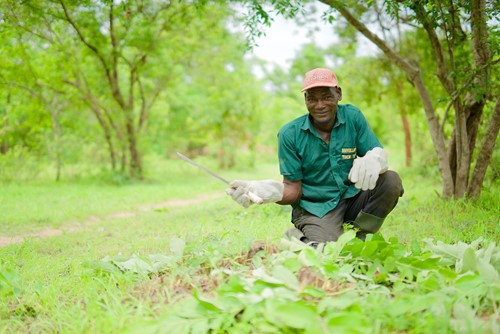
It’s a fast-paced role of real importance, and it doesn’t come without risks – Mouni told us:
“Forest fires are very dangerous… The biggest challenge for me is when there is some forbidden action in the forest, and I need to get there fast. If I meet people starting a fire, the first thing I do is train them that a bush fire is not good as it destroys the environment and the forest. Then, if people do it again, I bring them to the attention of to the forest government – we have some policies and rules that everybody must respect. They have to pay a fine if the forest is badly destroyed.”
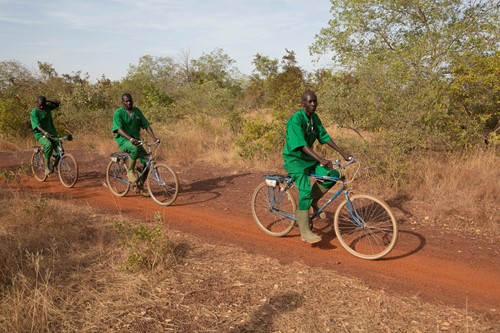
Mouni was proud to tell us of the impact his role has had for local forests:
“I am very happy and I feel I am now useful for my community. By my involvement, I am helping to restore our natural resources. Everybody is [now] involved in protecting the environment, trees are no longer being destroyed and the forest is even being restored. People understand why trees are important and that they can make a profit from them too."
‘How do you make sure that the trees you plant survive?’
As a tree planting charity working in some of the world’s hottest countries, it’s a reasonable question, and one we are asked all the time! In short, it takes a lot of work to make sure that the trees we grow live long, healthy and productive lives.
We do this by:
- Planting the right tree species in the right places, using the right techniques
- Making sure the trees we grow have enough water and healthy soils, or are a species well-suited to arid conditions
- Ensuring trees are protected from the impacts of a changing climate, like wildfires
As the impacts of the climate crisis are felt more widely and more intensely, communities across the globe must be equipped to protect trees from wildfires and bushfires. Using effective, low-cost and water-free methods is especially important in areas with a high risk of drought, like the sub-Saharan regions of Africa where Tree Aid work.
"One of the challenges we face in the communities where we work is fire management… in the dry season the grasses are really very dry and serve as fuel"
Alexis Sompougdou, Forest Governance Specialist
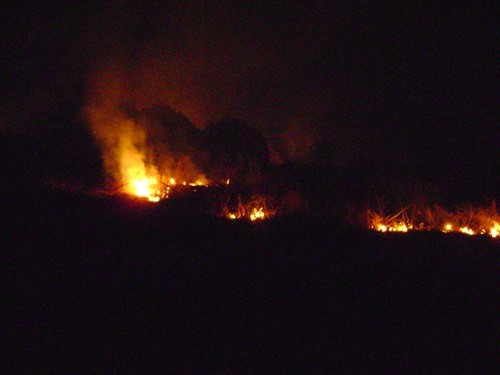

Nature-based solutions to a growing problem:
It’s no secret that deforestation is an enormous issue, and a vital piece of the puzzle when tackling the climate crisis. Whilst we’re proud of our achievements in planting new trees over the last year (a whopping 27,616,546 since we began in 1987!), our work implementing preventative measures to tackle forest loss are just as important.
The good news is that these measures are incredibly cost effective and easy to scale-up. Firebreaks are a brilliant nature-based solution to forest fires, whilst planting trees helps to increase humidity, making wildfires less likely. Similarly, our water conservation work is also helping to tackle drought and reduce aridity across the region, by improving availability of water in the dry season.






